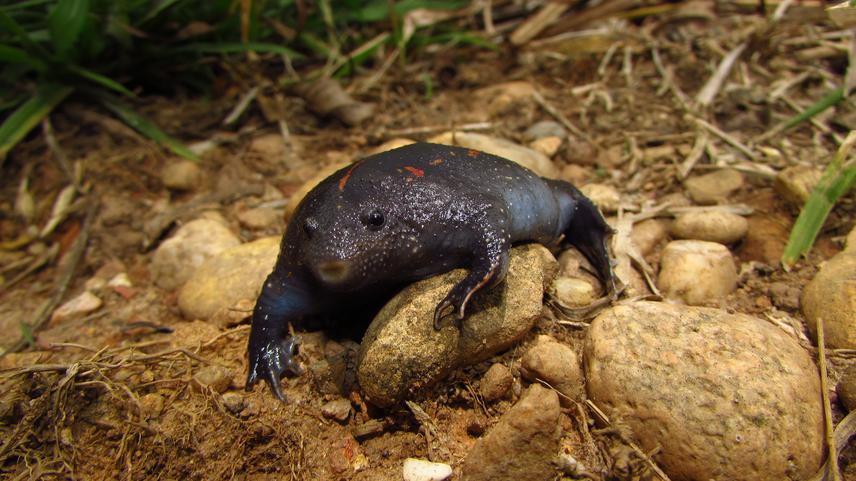Martín de Jesús Cervantes López
Other projects
5 Jan 2022
The Role of Landscape Structure and Habitat Quality in Safeguarding Amphibian and Reptile Diversity in Cocoa Agroforestry Systems
Land-use changes are increasingly threatening the conservation of tropical biodiversity. Thus, understanding the response of species to these changes has never been so urgent to improve conservation strategies. I will assess the effects of the percentage of forest cover and of the dominant land covers in the anthropogenic matrix, for the maintenance of amphibian and reptile communities. The spatial distribution of species across geomorphological units will also be assessed to identify those of highest conservation priority. This knowledge is urgently needed because these animals are among the most threatened vertebrates worldwide and play key important ecological functions in tropical ecosystems.

Rhinophrynus dorsalis
The rapid increase in human population and its growing demand for space, food and energy have resulted in deforestation and fragmentation of tropical forest worldwide. An increasing proportion of global biodiversity is located in human-modified landscapes composed on forest fragments embedded in anthropogenic matrices of varying composition (e.g. agricultural lands, cattle pastures, human settlements). As this situation threatens the maintenance of global biodiversity, we should design and implement strategies that allow us to produce resources for humans without compromising the conservation of species and the ecological resources they provide.
To this end, we need to understand the way species respond to habitat changes across different spatial scales in these emerging landscapes. Of particular relevance is understanding:
(1) the ability of species to use different land cover types in the landscape (both forest fragments and the surrounding matrix),
(2) the extinction threshold (i.e. the forest cover that we must preserve in the landscape to avoid the collapse of populations and communities),
(3) the spatial distribution of species across environmental gradients in the landscape, such as soil types and topography. This knowledge is urgently needed for amphibians and reptiles, not only because they are considered among the most threatened terrestrial vertebrates worldwide, but also because they are usually in the middle of food chains, playing thus key important ecological functions in tropical ecosystems (e.g. plague control, seed dispersal). The Lacandona rainforest, in southeastern Mexico, is an ideal region to work with this topic, as:
(1) it is part of the largest biodiversity hotspot in Mesoamerica (the Maya forest),
(2) it only covers 0.7% of the Mexican continental territory, but maintains almost 10% of the amphibian and reptile species in Mexico;
(3) land-use change in the region during the last 45 years has created heterogeneous landscapes;
(4) the response of herpetological communities to land-use changes is poorly known.
Therefore, the present project will be focused on testing for variations in the composition and structure of amphibian and reptile communities among dominant land covers in the region: continuous forest, forest fragments, palm oil crops, cattle pastures, and corn crops = milpa. Following theoretical and methodological approaches from countryside biogeography, I will assess changes in within- (alpha) and between- (beta) community diversities to identify the contribution of each land cover to landscape (gamma) diversity. I will also identify if there are extinction thresholds for each group (amphibians and reptiles), and finally, the contribution of the geomorphological units (alluvial, low hills and karst) for the conservation of herpetological communities.